ORCA testbed facilities provide complementary capabilities to enable innovative communications research. Click on the name of the testbed to deploy the detailed information:
- Short Description:The w-iLab.t testbed at imec in Ghent provides a semi-shielded test environment with many heterogeneous devices. On more than 100 locations, embedded PCs are equipped with 802.11a/b/g/n/ac WiFi cards and IEEE 802.15.4 sensor nodes. In addition, lots of SDR hardware is available: USRPs, WARPs, ZYNQ boards. Imec also has portable wireless test infrastructure facilitating experiments on remote locations. The hardware and tools are the same as the w-ilab.t testbed. In total 12 embedded wireless pc’s are available (WiFi 802.11 a/b/g/n/ac cards, 802.15.4 sensor nodes). The nodes can easily be extended by any USB-compatible hardware, such as SDR hardware (e.g. USRP b200 mini, USRP b200, USRP b210 or even USRP x310 or Zynq boards on request). Hardware in the portable testbed can be powered by Power over Ethernet or battery packs (which run up to 8 hours).
- Unique Features:
- Large scale wireless test environment
- Semi-shielded from outside interference
- Controlled interference generation possible
- Different Software-defined Radio equipment
- Mobile experimentation with fully autonomous remotely controlled robots
- Portable wireless test infrastructure (also with SDR equipment) that can be rapidly deployed in the field
- Links:
- http://doc.ilabt.imec.be/ilabt-documentation/wilabfacility.html
- Portable testbed: https://doc.ilabt.imec.be/ilabt/portabletestbed/index.html
- USRP N210 usage: https://doc.ilabt.imec.be/ilabt/wilab/tutorials/usrp_n210.html
- USRP B200/B210 usage: https://doc.ilabt.imec.be/ilabt/wilab/tutorials/usrp_b200.html
- Zynq SDR usage: https://doc.ilabt.imec.be/ilabt/wilab/tutorials/zynq_sdr.html
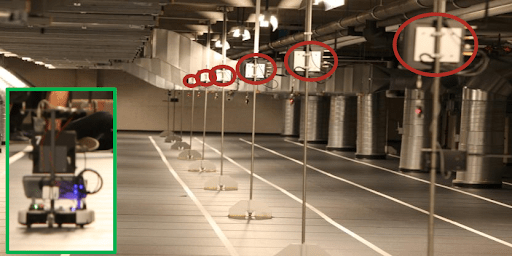 w-iLab.t testbed with mobile robots
w-iLab.t testbed with mobile robots
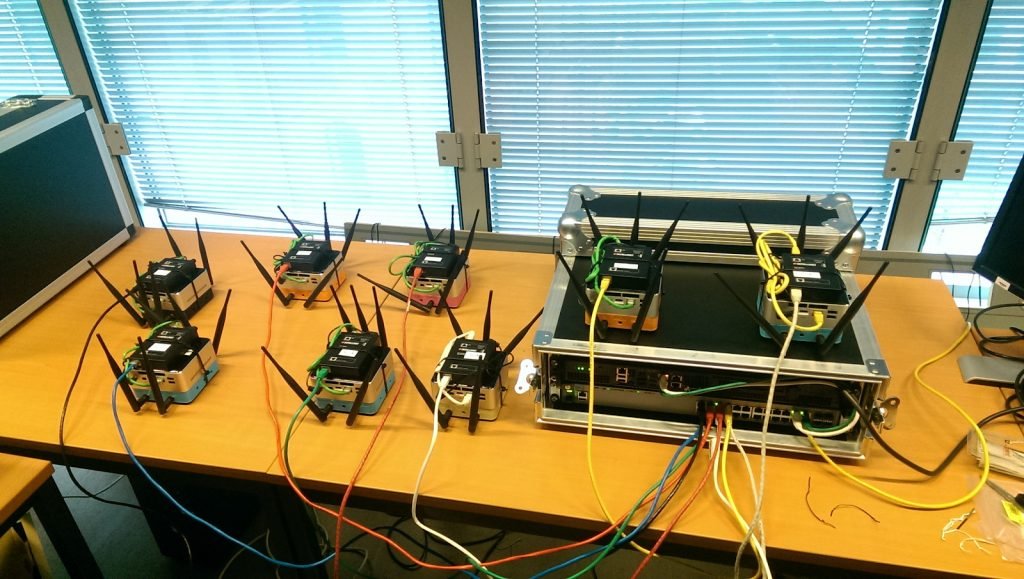 Portable testbed
Portable testbed
- Short Description: ORBIT is a 20×20 two-dimensional grid of programmable radio nodes available for remote or on-site access with the range of radio resources including: Software Defined Radio (SDR) platforms (USRP, WARP, RTL-SDR, USRP N210, USRP X310, USRP B210, Nutaq PicoSDR2x2-E and Nutaq ZeptoSDR ), WiFi 802.11a/b/g 802.11n 802.11ac, Bluetooth (BLE), ZigBee, commercial LTE/WiMAX (basestations and clients), Cloud (including a number of nodes with Tesla-based GPUs) and Software defined networking (SDN) resources.
- Unique Features:
- Number of sandboxes with SDR devices
- 4 Massive-MIMO mini racks
- Private cloud (rack of machines) with GPUs
- SDN sandbox
- Links: http://www.orbit-lab.org
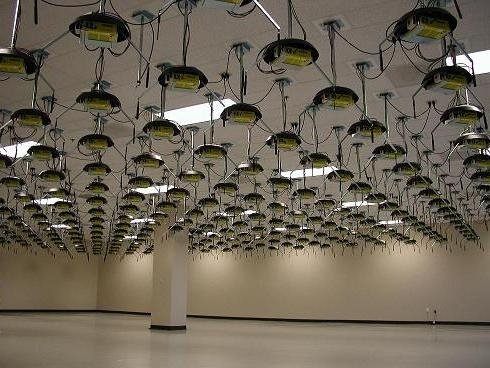
- Short Description: The reconfigurable radio testbed at Trinity College Dublin provides virtualized radio hardware, software virtualisation, Cloud-RAN, Network Functions Virtualisation (NFV), and Software Defined Networking technologies to support the experimental investigation of the interplay between 5G radio and future networks.
- Unique Features:
- Software-defined Radios
- Software-defined Networking
- NFV and OSM
- Network Slicing
- Links:
- Information: https://iris-testbed.connectcentre.ie/
- Tutorial:
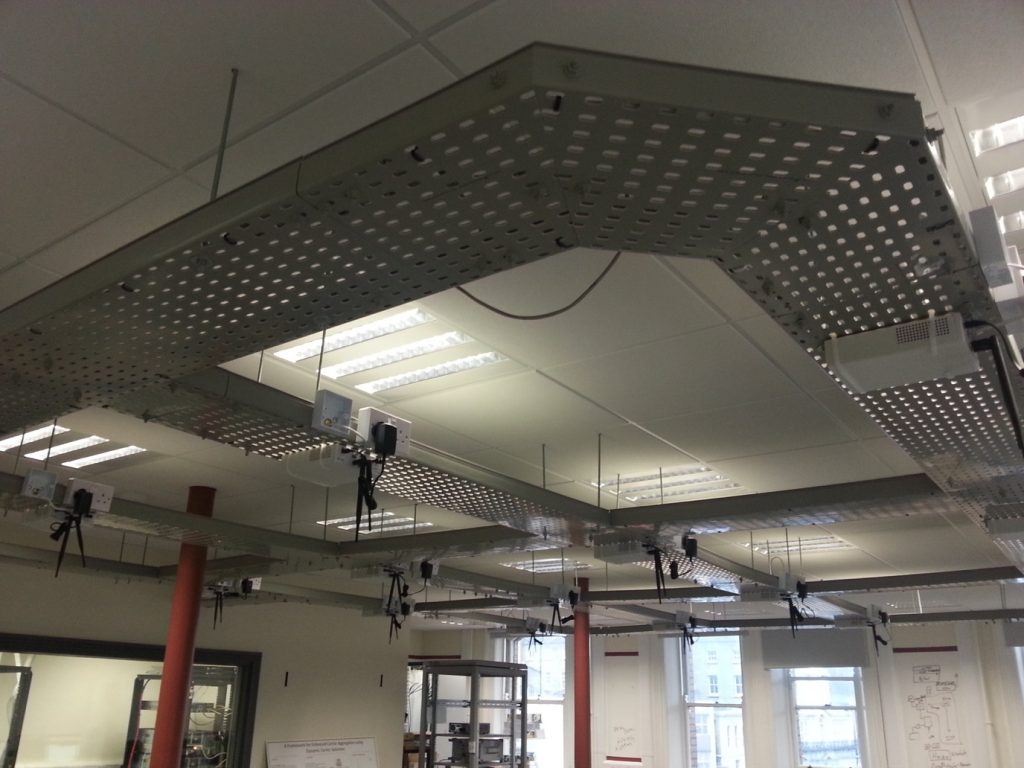
- Short Description:The “Online Wireless Lab (OWL)” testbed provides Software Defined Radio platforms that can be used for prototyping real-time systems. For example, the development tool LabVIEW/LVC in combination with USRPs supports experimenting with existing protocols such as LTE and 802.11, but it also enables fast proof-of-concept for innovative communication technologies such as Generalized Frequency Division Multiplexing (GFDM).
- Unique Features:
- 26 GHz front ends integrated to USRP
- Flexible GFDM transceiver
- Various SDR platforms
- Possibility of outdoor experimentation
- Links
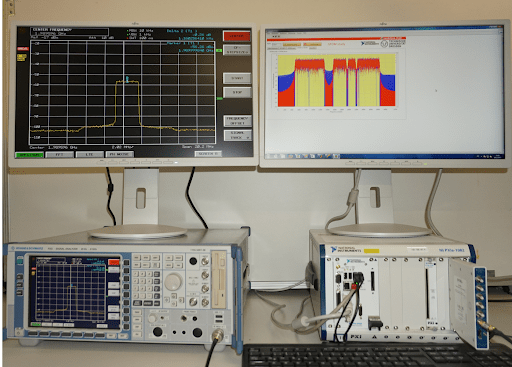
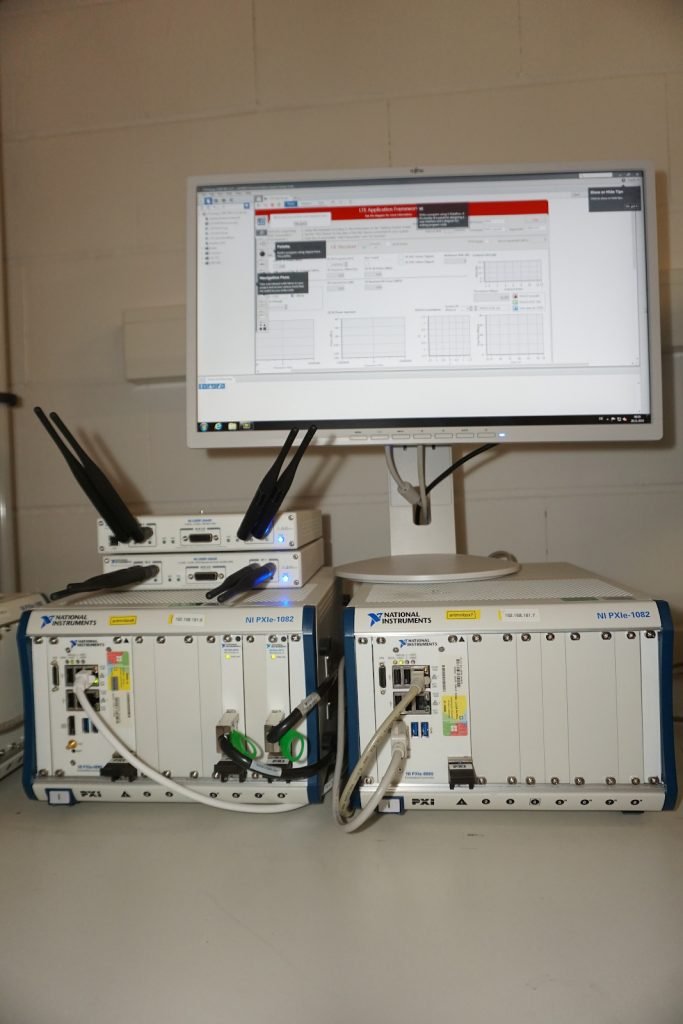
Short description:
- KU Leuven DiMa-MIMO: KU Leuven DiMa-MIMO allows simultaneous uplink/downlink data transmission between 12 users and one base station equipped with 64-antennas distributed into two homogenous arrays.
- KU Leuven In-band Full Duplex Testbed: Four-node full duplex enhanced SDRs enabling end-to-end network-level experimentation with in-band full duplex PHY and MAC support.
Unique features:
- KU Leuven DiMa-MIMO: The two distributed arrays allow us to create multiple virtual scenarios, as two-cell cooperative/non-cooperative MIMO system or a distributed single-cell massive MIMO system. An extensive data set collected from different experiments are provided in the following links:
- Outdoor Collocated/Distributed Experiment: https://www.esat.kuleuven.be/telemic/research/NetworkedSystems/projects/outdoor-collocated-distributed-experiment
- Indoor-Outdoor Collocated/Distributed Experiment: https://www.esat.kuleuven.be/telemic/research/NetworkedSystems/projects/indoor-outdoor-collocated-distributed-experiment
- KU Leuven In-band Full Duplex Testbed:
- 80-90 dB analog and digital self-interference cancelation
- Full stack implementation for end-to-end communication, including full duplex MAC and collision detection MAC protocol features
- Including real-time signal collision detection module
- Standard (IEEE 802.15.4) compliant mode
- Low-latency MAC & PHY synchronization
Pictures of KU Leuven DiMa-MIMO
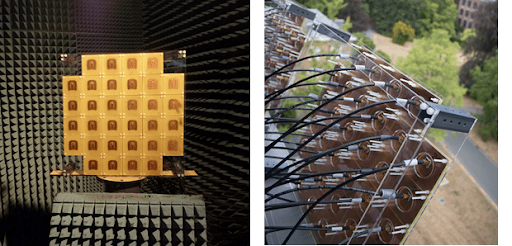
KULeuven DiMa-MIMO Base station distributed antennas array
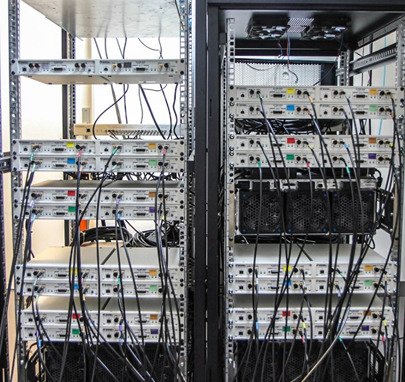
KULeuven DiMa-MIMO Base station distributed front-end.
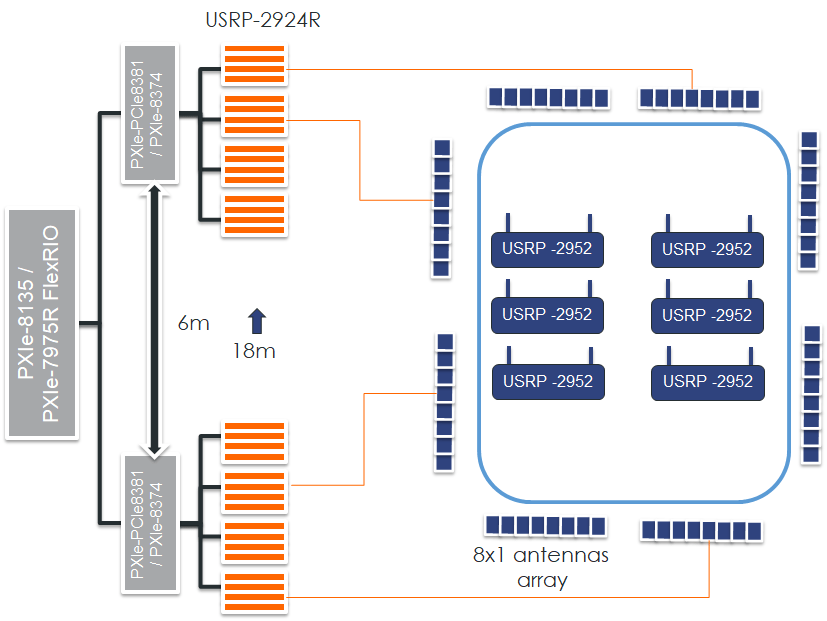
KULeuven DiMa-MIMO User equipment, incorporated with a 13dB power amplifier
Pictures of KU Leuven In-band Full Duplex Testbed:
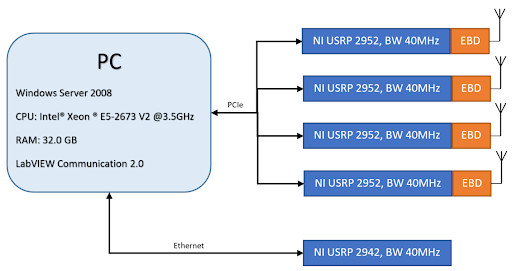
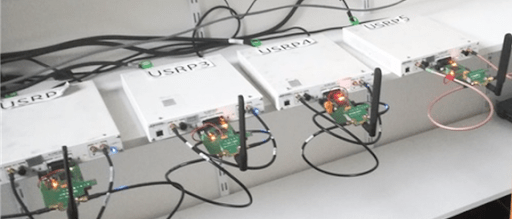
Overview of supported SDR platforms
The table below shows the supported SDR platforms for each of the testbeds as well as the number of devices available.
| Testbed | w-iLab.t (IMEC) | ORBIT (RUTGERS) | IRIS (TCD) | OWL (TUD) | KUL (KUL) |
|---|---|---|---|---|---|
| Nutaq ZeptoSDR | 2 | ||||
| Nutaq picoSDR | 2 | ||||
| USRP B200-mini | |||||
| USRP B205-mini | 5 | 4 | |||
| USRP B200 | 4 | ||||
| USRP B210 | 4 | 8 | |||
| USRP E310 | |||||
| USRP N210 | 6 | 25 | 18 | ||
| USRP X310 | 2 | 38 | 2 | ||
| USRP N310 | 2 | ||||
| USRP 2920 | 2 | ||||
| USRP 2921 | 1 | ||||
| USRP RIO 2942R | 1 | 34 | |||
| USRP RIO 2943R | 2 | ||||
| USRP RIO 2944R | 4 | ||||
| USRP RIO 2952R (+ GPS) | 8 | ||||
| USRP RIO 2953R (+ GPS) | 7 | ||||
| USRP RIO 2954R (+GPS) | 2 | ||||
| USRP RIO 2974 | 2 | ||||
| WARPv2 | 3 | ||||
| Xilinx ZC706 Evaluation Kit – ZYNQ® 7000 SoC + AD FMCOMM radio frontend | 3 | ||||
| ZedBoard Xilinx ZYNQ®-7000 SoC + AD FMCOMM radio frontend | 4 | ||||
| PXIe 8133 | 2 | ||||
| PXIe 8880 | 4 | ||||
| Sivers IMA EVK 06002 (60GHz 802.11ad beamforming transceiver evaluation kit) | 2 |
